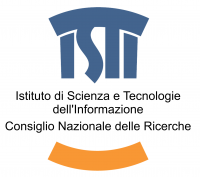Renato Saleri
Yves Ubelmann
The MAP research team is involved since more than 10 years in unmanned flight and advanced image analysis protocols able to provide robust computer-based workflows for architecture and historical heritage digital reconstruction. This opportunity raised within a collaborative partnership between three leading french research teams: the CNRS MAP itself, specialist in spatial data surveying and gathering, the MATIS laboratory, part of the french national geographic institute and SURVEY COPTER, another french subsidiary company, world leader in the domain of UAV’s design and production.
Aerial surveying is, in the domain of archeology and architecture, an exponential field of application and interest. Beyond the increasing flying capabilities and skills of existing UAV, the operational potentiality of such aircraft oversteps the imagination of their own creators. Initially conceived for robotic civilian and military surveying applications, recent experiments have tested autonomous flight, self decision-making and multi-agent convergent tasks.
On the other hand, existing image-based open source tools are today widely available on the web. User friendly interfaces allow to upload a set of un-oriented images which are often cloud-processed within a few minutes. These tools are mainly based upon classical computer-vision methods with a resulting low reliability of the underlying procedure and a poor dimensional accuracy in the final result. Although the visual appeal of these scenes and the easy-access of such technologies for non-expert users grant their increasing popularity, they are frequently unable to derive precise and reliable 3D reconstructions within an accurate metric context. On the other hand, range sensors (mainly laser scanners) are able to quickly produce dense and precise 3D clouds but often with a poor texture appearance and the need of a heavy 3D post-treatment to reconstruct surface geometry.
Preliminary Program:
The upcoming workshop should provide an interesting theoretical background based upon very different experiences in different domains:
- unmanned flight, light surveying aircraft
- remote sensing, active and passive payloads
- data processing software and algorithms
- spatial data gathering: scientific approaches for workflow optimization, cartography, cultural heritage, environment, time-lapse surveying…
- airworthiness and conformity of present and upcoming aerial unmanned configurations,risk management
- …
Practical approaches:
- Case histories introducing the most interesting and challenging experiments held by MAP and ICONEM
- Live Workshop if possible, a live workshop with a simple image capture session and a simple correlation processing programs
- Outdoor Demos submitted to meteorological conditions


